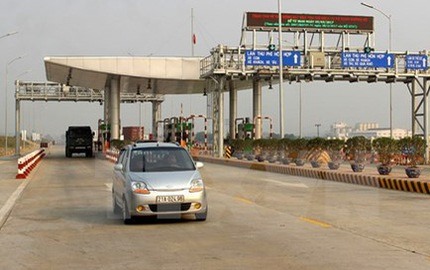 Opinion
Opinion

Nguyễn Xuân Sang, director general of the Việt Nam Maritime Administration tells the Thời báo Kinh tế Việt Nam (Việt Nam Economic Times) that it is the right time for enterprises to invest in the development of inland container depots
 |
Nguyễn Xuân Sang, director general of the Việt Nam Maritime Administration, tells the Thời báo Kinh tế Việt Nam (Việt Nam Economic Times) that it is the right time for enterprises to invest in developing inland container depots.
What are the new points in the Ministry of Transport’s plan to develop inland container depots through 2020 and the 2030 orientation plan?
Việt Nam now has 21 inland container depots (ICD), but only 5 of them are officially recognized by the Ministry of Transport (MOT). That’s why the Việt Nam Maritime Administration (VMA) has been developing a detailed plan on all 21 ICDs. Meanwhile, many localities have expressed interest in constructing new ICDs with a hope to speed up economic development.
Based on the real situation in the country, the VMA has come up with 3 requirements to build a new ICD.
First, the ICD must be located at least 300 km from the nearest sea port.
Second, all ICDs which are close to the sea ports must foresee future expansion.
And finally the objective of building ICDs which are landlocked, is to reduce transit time, clearance cost or damage and cargo displacement during port transits.
What are the criteria for building an ICD?
It is the VMA and consulting agencies’ view that the scale of an ICD should be medium sized and close to goods producing areas/regions so that it can help cut transport cost from the ICD to the factories or vice versa. However, an ICD should seat on an area of about 5 ha. In addition, the investor must have all necessary equipment to handle the goods coming in or going out of the ICD.
Some have suggested that if any localities already have seaports, ICDs should not be built there. How do you respond to that suggestion?
I don’t agree with that idea. As far as I know, quite a few countries have built their ICDs close to the sea ports. However, to make the best use of the ICDs, they should be ideally built far away from the sea ports. Such a distance will help the gathering of the cargoes much better.
In northern Việt Nam, more than 95 percent of the goods transport in containers to and from the sea port goes by road. Don’t you think that the building of new ICDs will be “life savers” for our roads?
According to detailed ICD construction plans, their locations will be carefully selected so that they can cut short the travelling time of the cargo on the road. In other words, ICDs will be located near industrial parks and processing zones. We hope, with this idea, that future ICDs will create a new turn in the transportation mode and the involvement of different transportation modes from one end to the other.
But, there is a question as to what will happen to the Lạng Sơn-Hải Phòng or Lào Cai-Hải Phòng land routes. Should we use the railways instead of cargo trucks? Or should we give a thought of utilising available waterway routes? We have to calculate which transportation mode will help us cut costs. This is a very effective way to increase our economic development.
Do you think that the VMA should create port authorities in all new ICDs?
I don’t think so. Based in the real situation in our ICDs, we don’t need to create new port authorities there. Most of ICDs are seated in the inland waterway ports, and they all have their port authorities.
If goods are transported by trucks, we don’t need to have port authorities. In some cases, the cargo transport is a combination between rail and road, we will use the ICDs of the Việt Nam Railway Corporation.
Will you please talk a bit about the idea of having private ICDs built in Việt Nam?
If in the past, all ICDs were invested with the State budget. But many enterprises have expressed their interest in investing in building ICDs, as they now have realised that investment in building ICDs is a good business practice.
If our plan in the development of inland container depot in the period 2020 and the 2030 orientation plan is approved by the government, it will open up new opportunities for many enterprises to invest in building new ICDs._VNS




